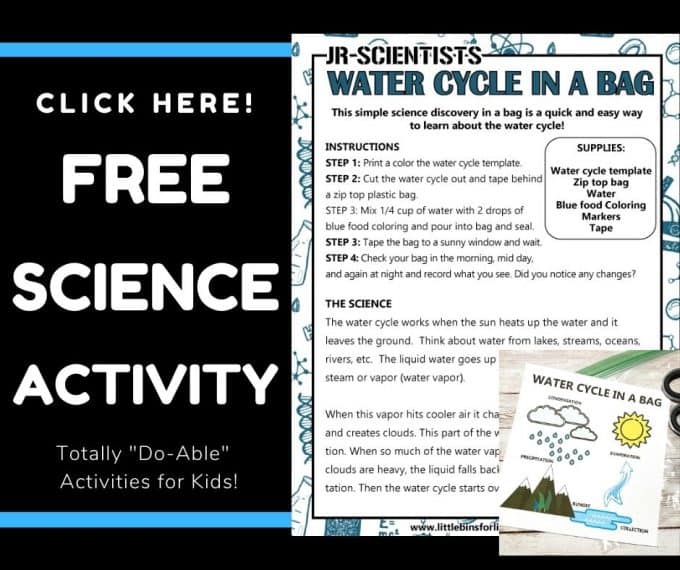The water cycle is important because it is how water gets to all the plants, animals and even us!! Learn about the water cycle with this easy water cycle in a bag experiment and printable water cycle worksheet. Find out what the role of the sun is in the water cycle and what evaporation and condensation are. We have lots of do-able and fun weather activities for kids!
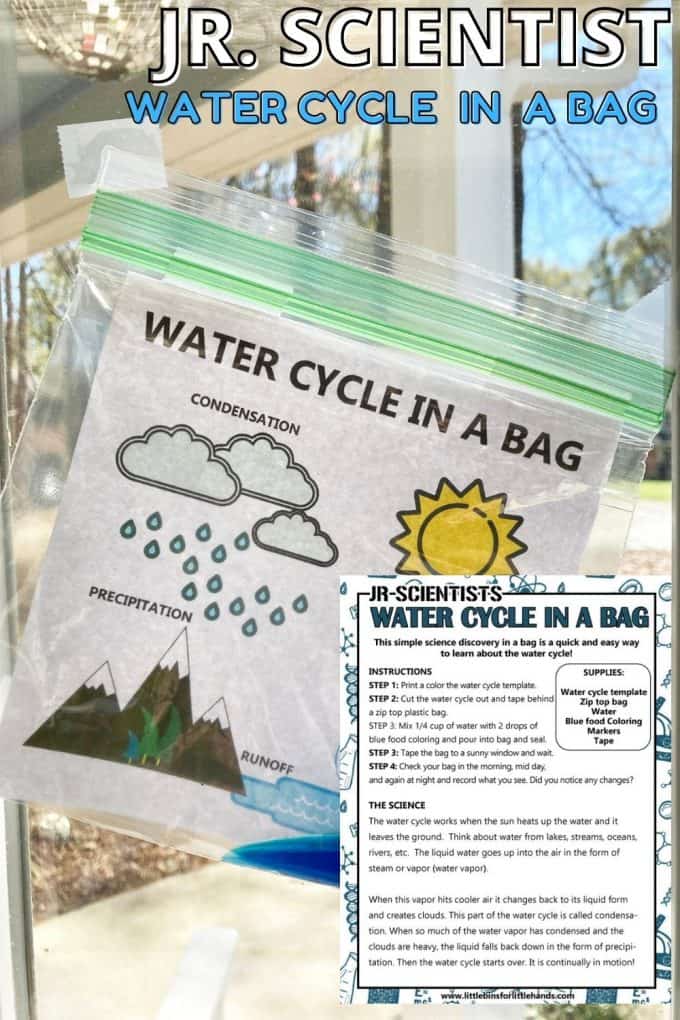
Explore The Water Cycle For Weather Science
Get ready to add this fun weather science activity, to your lesson plans this season. Our weather activities are designed with you, the parent or teacher, in mind!
Easy to set up, quick to do, most activities will take only 15 to 30 minutes to complete and are heaps of fun! Plus, our supplies lists usually contain only free or cheap materials you can source from home!
Making this water cycle in a bag provides a hands-on learning experience. It is an effective visual representation of the water cycle’s key processes—evaporation, condensation, and precipitation. By observing the changes within the bag, kids can see how water transitions between different states of matter.
This activity will help kids grasp the importance of water movement in the natural world. It allows them to connect the stages of the water cycle to real-life occurrences like rain, clouds, and sunshine.
Plus, it encourages kids to ask questions, make predictions, and draw conclusions based on their observations. It promotes a scientific mindset by fostering curiosity and critical thinking.
Let’s find out how to set up a water cycle in a bag, and learn about the specific steps of the water cycle! While you’re at it, make sure to check out these other fun earth science activities.
How To Set Up Water Cycle In A Bag
You can also make a water cycle in a bottle as an alternative.
Free Printable Water Cycle In A Bag Worksheet!
Supplies:
- Water cycle template
- Zip top bag
- Water
- Blue food coloring
- Markers
- Tape
Instructions:
STEP 1: Print out and color the water cycle worksheet.
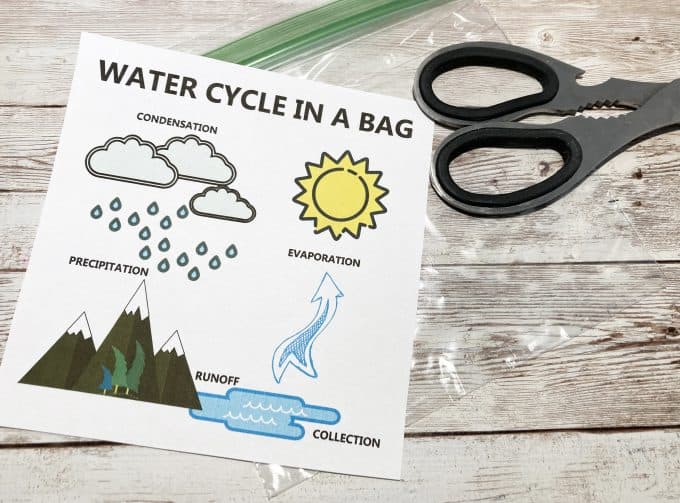
STEP 2: Cut the water cycle diagram out and tape it to the back of a zip top plastic bag.
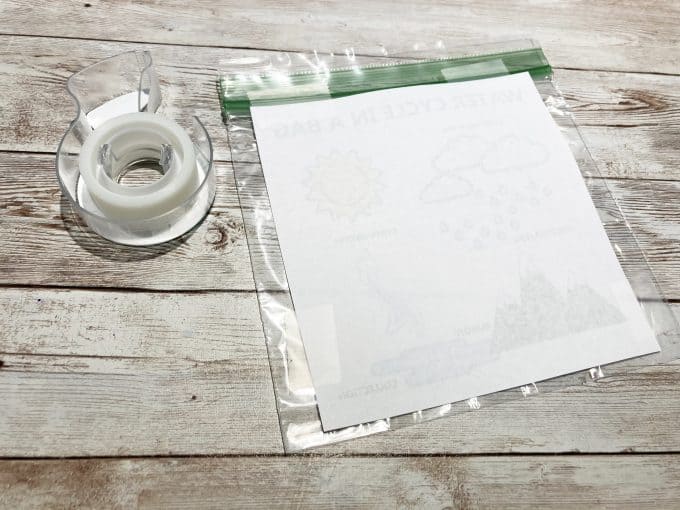
STEP 3: Mix 1/4 cup of water with 2 drops of blue food coloring and pour into the bag and seal.
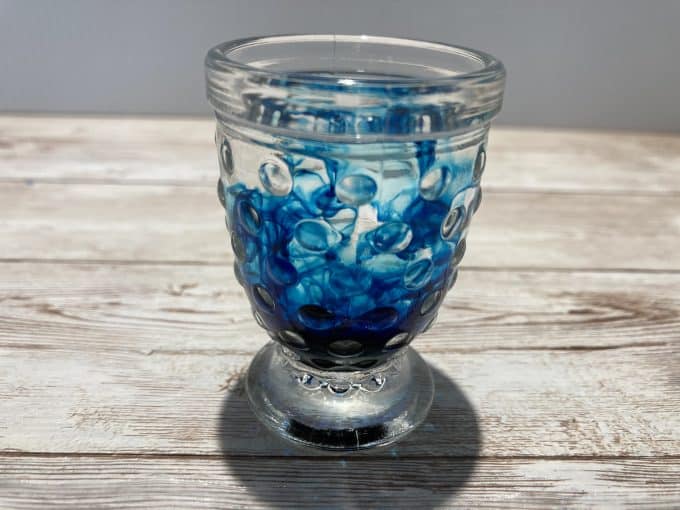
STEP 3: Tape the bag to a sunny window and wait.
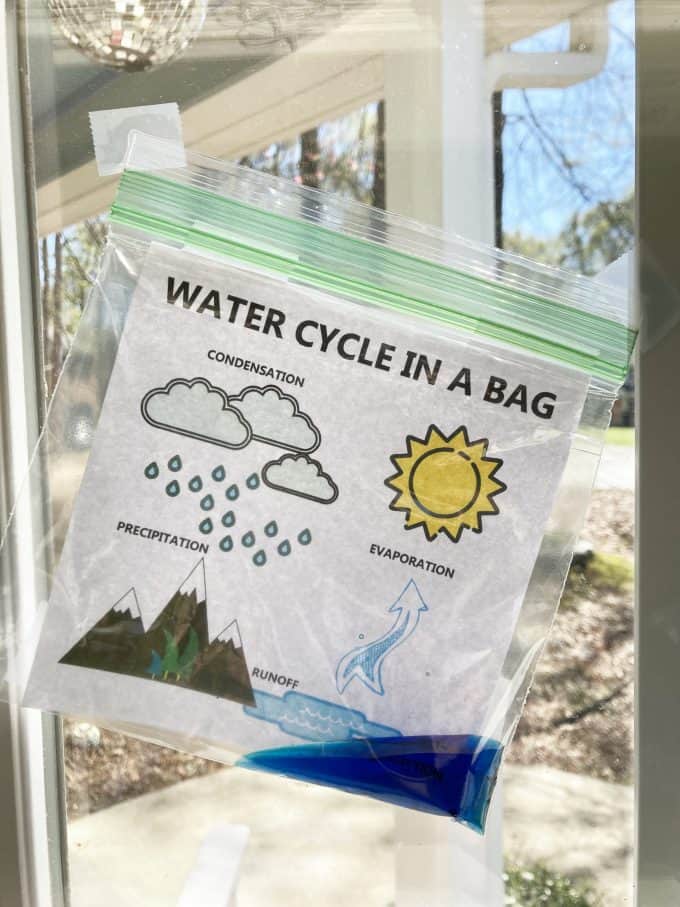
STEP 4: Check your bag in the morning, mid day, and again at night and record what you see. Did you notice any changes?
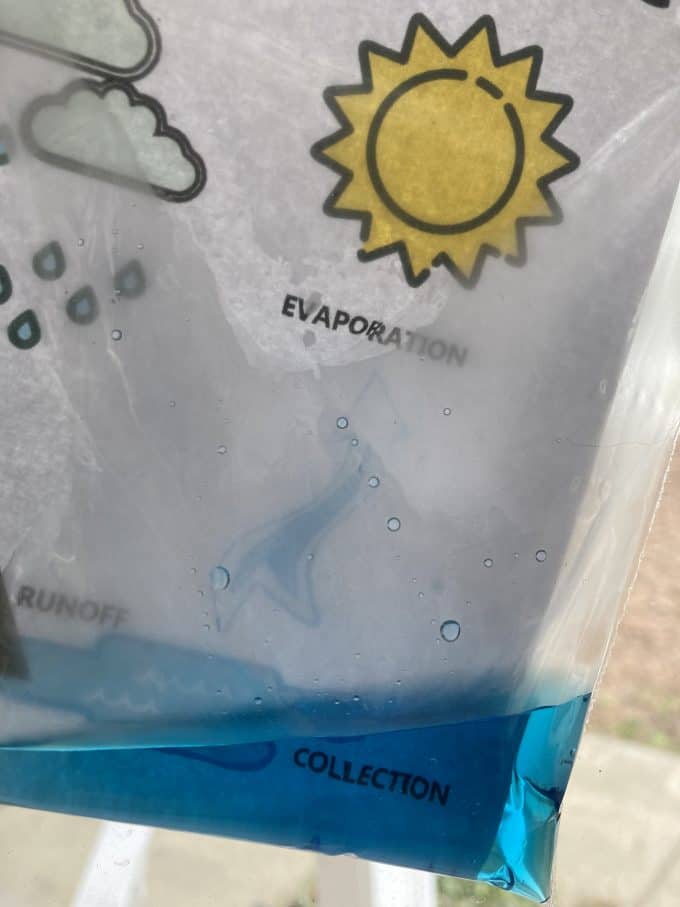
The Steps of The Water Cycle
The water cycle is a natural process that describes how water moves and changes states between liquid, vapor (gas), and solid (ice) on Earth.
Learn more about states of matter.
Evaporation
The water cycle works when the sun heats up a body of water and some of the water evaporates into the air. This might be water from lakes, streams, oceans, rivers, run off etc. The liquid water goes up into the air in the form of steam or vapor (water vapor).
Condensation
When this vapor hits cooler air it changes back to its liquid form and creates clouds. This part of the water cycle is called condensation.
Related Activity: Rain Cloud In A Jar
Precipitation
When so much of the water vapor has condensed and the clouds are heavy, the liquid falls back down to the earth in the form of precipitation. Precipitation can be in the form of rain, hail, sleet or snow.
Runoff
After precipitation, water can flow over the land, forming streams and rivers. This is called runoff. Picture raindrops flowing down the street or through a garden into a stream.
Related Activity: Stormwater Runoff Demonstration
Collection
The water from runoff collects in oceans, lakes, and rivers, starting the cycle again. It’s like a giant water reservoir that holds all the water until the sun warms it up and turns it into vapor, starting the process over.
Transpiration
Another way water returns to the atmosphere is through transpiration. Plants absorb water from the soil through their roots and release it into the air as water vapor through tiny openings in their leaves.
Related Activity: How Plants Breathe
Repeat
The water cycle is a continuous process. Water from the Earth’s surface evaporates, forms clouds, falls back as precipitation, and repeats the cycle over and over again.
Create your own water cycle below with our free printable water cycle diagram. Find out what happens to the water you add to your bag. Let’s get started!
More Fun Weather Activities For Kids
When kids finish making their rain gauge, explore more weather science with one of these ideas below. You can find all our weather activities here!
Learn how a tornado forms with a simple tornado in a bottle.
Make a DIY anemometer to measure the direction of wind.
Explore where rain comes from.
Make a DIY rain gauge to measure local rainfall.
Build a windmill from paper cups and straws.
Identify the layers of the atmosphere with these printable worksheets.
Set up a water cycle in a bottle or a water cycle in a bag for weather science.
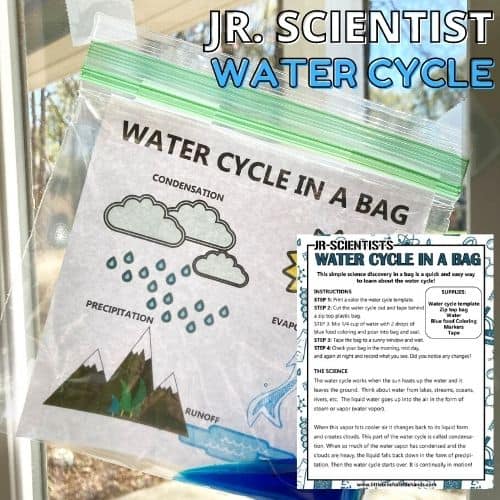
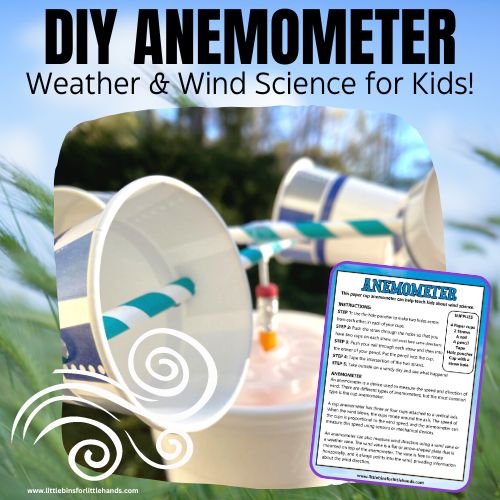

Printable Science Projects For Kids
If you’re looking to grab all of our printable science projects in one convenient place plus exclusive worksheets and bonuses like a STEAM Project pack, our Science Project Pack is what you need! Over 300+ Pages!
- 90+ classic science activities with journal pages, supply lists, set up and process, and science information. NEW! Activity-specific observation pages!
- Best science practices posters and our original science method process folders for extra alternatives!
- Be a Collector activities pack introduces kids to the world of making collections through the eyes of a scientist. What will they collect first?
- Know the Words Science vocabulary pack includes flashcards, crosswords, and word searches that illuminate keywords in the experiments!
- My science journal writing prompts explore what it means to be a scientist!!
- Bonus STEAM Project Pack: Art meets science with doable projects!
- Bonus Quick Grab Packs for Biology, Earth Science, Chemistry, and Physics



